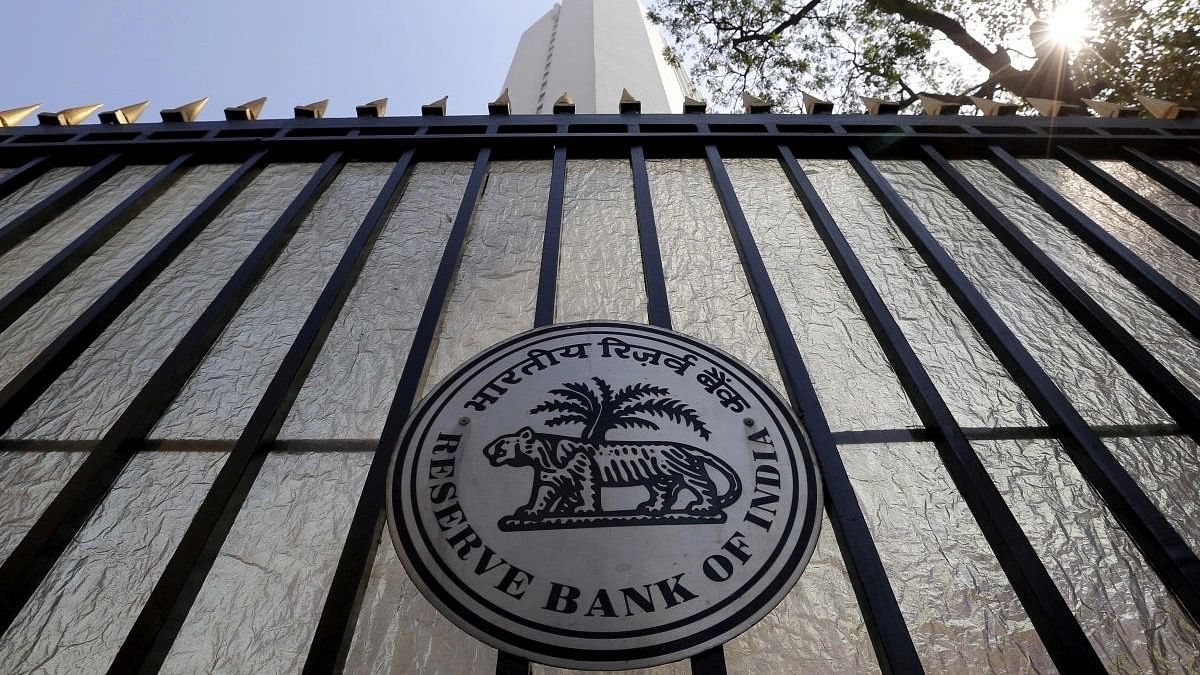
Reserve Bank of India (RBI).
Credit: Reuters File Photo
The decision by the six-member Monetary Policy Committee (MPC) of the Reserve Bank of India (RBI) to maintain the repo rate at 6.5 per cent was expected. The repo rate, which is the rate at which banks borrow from the RBI, has remained unchanged for the eighth consecutive time since February 2023.
The MPC also decided to stick to its stance of 'withdrawal of accommodation' indicating its cautious optimism towards growth amid concerns regarding 'food inflation', which is consistently at elevated levels of above 7 per cent.
There are two significant surprises in the policy announcements. Most analysts, bankers and opinion polls had voted for maintaining the status quo in the economic growth rate for the financial year 2024-25 at 7 per cent as projected earlier in the last MPC meeting by the RBI, especially considering the context and backdrop of the emergence of a coalition government at the Centre.
The RBI governor threw a googly by enhancing the growth rate projection for FY25 to 7.2 per cent. This reflects the robustness and resilience of our economy, with strong macros of a gross domestic product of 8.2 per cent in the just completed FY24 (2023-24) and a 4th quarter (Jan-March 2024) growth rate of 7.8 per cent. The consumer price index (CPI) inflation moderated month-on-month from 4.9 per cent in March to 4.8 per cent in April on durable basis though the RBI's target is 4 per cent. Even the core inflation (non-fuel and non-food) was at 3.2 per cent in April as against 3.3 per cent in March. The elephant in the room is the spiralling food inflation, which rose to 8.7 per cent in April as against 8.5 per cent in March.
There has been a spurt in food prices, especially that of cereals, pulses, eggs, meat and meat products, which affects the inflation trajectory and consequently impacts the growth. Still, the RBI/MPC has not tinkered with the inflation projection for FY25, which is maintained at 4.5 per cent with risks evenly balanced.
The rationale for not being overly worried about the spike in food inflation is due to its transitory nature, the forecast of above-normal monsoon which augurs well for the kharif season, a good buffer stock of wheat and rice, and crude oil prices still hovering in the range of $78-$82 per barrel.
The MPC's 4-2 majority decision to keep both the policy rate and the stance status quo will have interesting repercussions. The strong views of the two members (Ashima Goel and Jayanth R Verma) for a reduction in the repo rate by 25 bps and a change in stance to ‘accommodation’ to facilitate and push growth will apply pressure on the RBI/MPC in the ensuing meetings (August/October) to consider their rationale for reducing the interest rate to promote growth and kick-start the nascent private Capex cycle.
Moreover, the increase in the GDP projected growth rate for FY25 to 7.2 per cent cannot happen with higher interest rates. So, RBI Governor Shaktikanta Das is indirectly indicating the beginning of the interest rate reduction cycle by the end of this year. The all-time record high transfer of Rs 2.11 lakh crore as surplus to the central government for the year 2023-24 will tremendously help the new coalition NDA government to use this huge corpus for Capex spending (infra target as per interim budget is Rs 11.11 lakh crore) and to keep the leash on the fiscal deficit, which is targeted at 4.5 per cent by 2025-26.
The governor, being an avid cricket fan, has cemented the above possibility by saying that the RBI is not guided by the principle of ‘follow the Fed’. Das beautifully put it by saying, "We play the game according to the local weather and pitch conditions” (not like the pitches in the US where ICC T20 World Cup matches are being played). This clearly suggests and signals a 25 bps reduction in the repo rate by December end, even if the US Federal Reserve does not reduce the rate.
To prevent 'asset liability mismatch', the RBI has proposed to revise the definition of bulk deposits to Rs 3 crore and above for all scheduled commercial banks and small finance banks (excluding RRBs). This will force the banks/SCBs to go for retail public deposits by offering higher interest rates on fixed deposits. This can, however, affect the lending rates to corporates, housing and vehicle loans, and personal loans to an extent, over a period of time.
The RBI governor came down heavily on some micro-finance institutions (MFIs) and NBFCs that are charging higher interest rates on small-value loans, which appears to be usurious. He cautioned the regulated entities to judiciously use the regulatory freedom of charging interest rates and fees to ensure fair and transparent pricing. The governor also mentioned that the RBI is closely monitoring the functioning of the NBFCs/MFIs and would not hesitate to take further tightening measures if the data or situation warrants.
(The writer is a former banker)